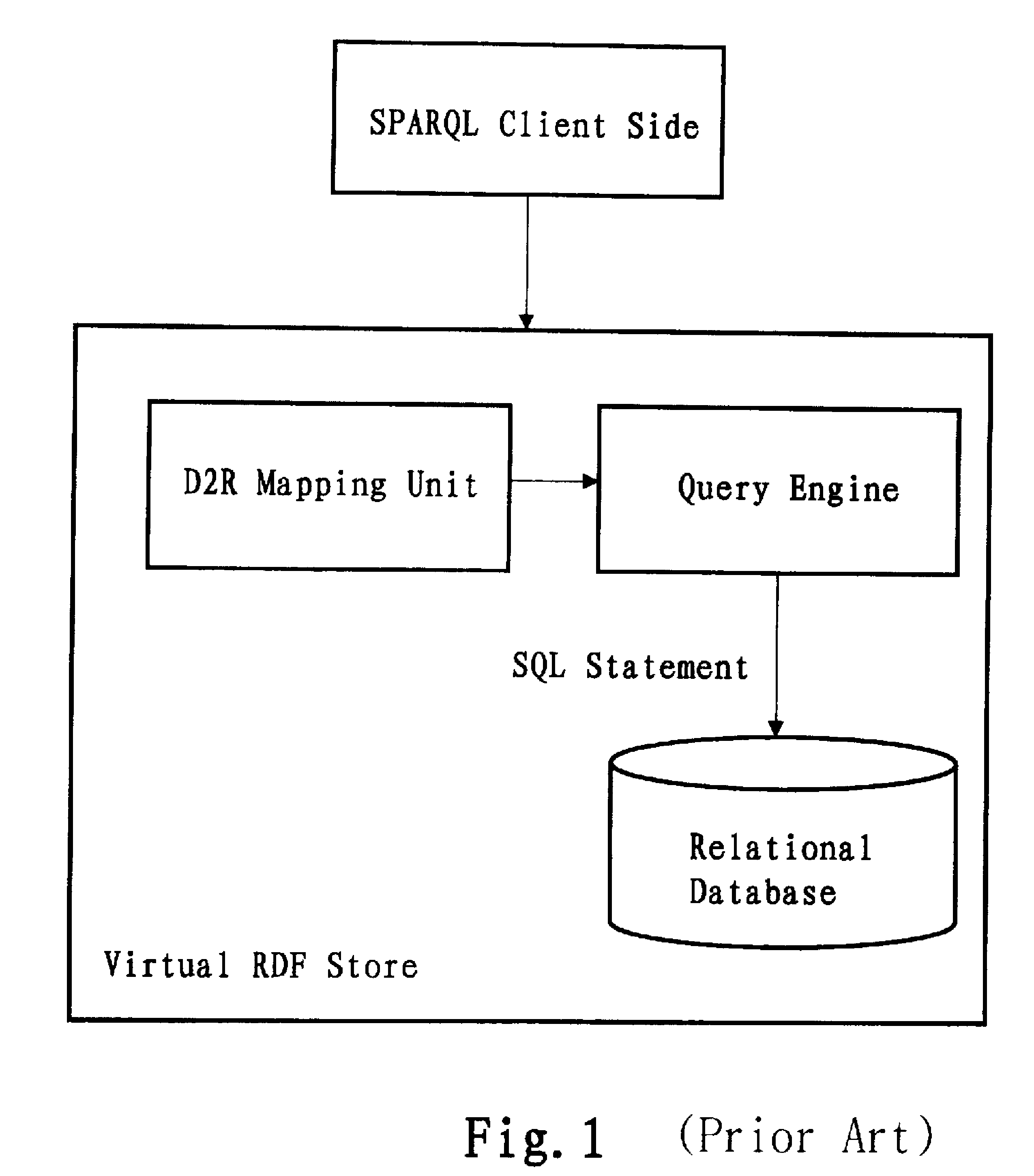Translation system and method for SPARQL queries
a translation system and sparql query technology, applied in the field of database queries, can solve the problems of high space cost, no syntax structure of explicit negative pattern in existing sparql language, and the complexity of the “!=” operation in the translated sql statement, and achieve the effect of efficiently translating a sparql query statement into a sql statemen
- Summary
- Abstract
- Description
- Claims
- Application Information
AI Technical Summary
Benefits of technology
Problems solved by technology
Method used
Image
Examples
Embodiment Construction
[0034]The exemplary embodiments of the present invention are specifically described below with reference to the drawings.
[0035]The present invention improves the translation process of SPARQL queries into SQL queries. An expression in an explicit negative pattern is introduced, and in the process of translating an SPARQL statement into an SQL statement, a hidden negative pattern in the SPARQL statement is first translated into an explicit negative pattern, thereby optimizing the translation process and the obtained SQL statement.
[0036]In one embodiment of the present invention, the explicit negative pattern is represented as “!”, that is, a flag of negation “!” is added in front of a typical triple. “!” means that there is no instance of . In a closed world, the assumption is !=. However, a person skilled in the art can realize that other representations are also feasible.
[0037]After the explicit negative pattern is defined, any existing negative pattern in the SPARQL can be express...
PUM
 Login to View More
Login to View More Abstract
Description
Claims
Application Information
 Login to View More
Login to View More - R&D
- Intellectual Property
- Life Sciences
- Materials
- Tech Scout
- Unparalleled Data Quality
- Higher Quality Content
- 60% Fewer Hallucinations
Browse by: Latest US Patents, China's latest patents, Technical Efficacy Thesaurus, Application Domain, Technology Topic, Popular Technical Reports.
© 2025 PatSnap. All rights reserved.Legal|Privacy policy|Modern Slavery Act Transparency Statement|Sitemap|About US| Contact US: help@patsnap.com



